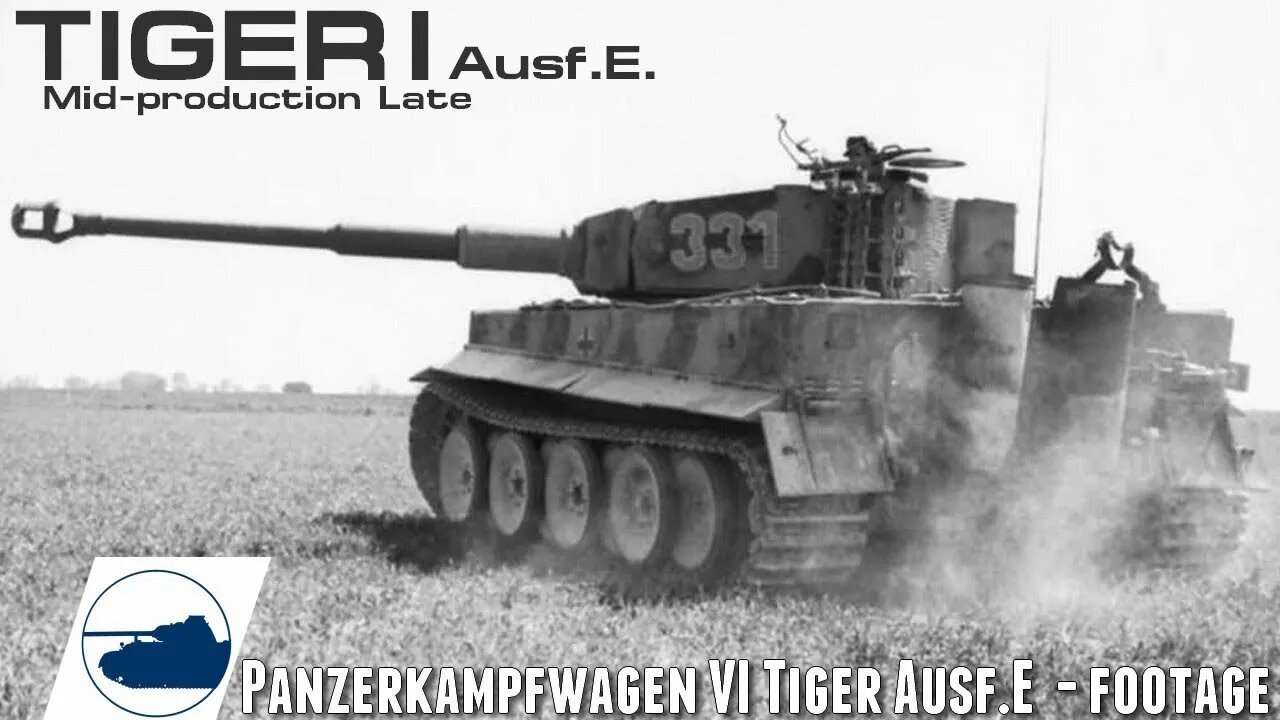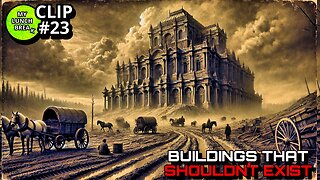Premium Only Content

WW2 Tiger I Ausf.E. mid-production/late - footage.
0:05 Tiger I Ausf.E. mid-production testing.
1:01 Training video
2:05 Tiger I Ausf.E. mid-production and a Early version towing a Late Tiger at Stalingrad.
3:02 Several types of abandoned Tiger tanks in Ukraine.
4:34 Abandoned and destroyed Tiger I Italy, 1944.
5:28 Multiple Tiger tanks abandoned on a road in Italy.
8:43 Tiger I Ausf.E from the 334, s.Pz.Abt 504, was destroyed by it's own crew to avoid capture. Italy, 1944.
9:20 Famous film footage of Michael Wittmann with his Tiger in Normandy.
9:33 Otto Carius among other Panzer commanders, on top of his Tiger.
10:01 Tiger I with turret number 334 from the SS-Pz.Abt. 101 at Rauray, was abandoned by it's crew after it was hit several times, this tank was captured in perfect running condition by the British and send to Bovington and was later scrapped.
10:39 Knocked out German tanks on the main street of Villers-Bocage. The Tiger, with turret number 112 and a Panzer Iv were knocked out by either grenades or a Firefly, the Tiger in the foreground had turret number 121 and was knocked out by a Firefly after it ran into a house. Note that both the guns were sabotaged by the retreating Germans.
10:46 The same tanks in Villers-Bocage, after being bombarded and destroyed.
11:02 Several Tigers and Panzer IV tanks destroyed by aerial bombs.
11:18 Tiger I with turret number 334 from the SS-Pz.Abt. 101 at Rauray, was abandoned by it's crew after it was hit several times, this tank was captured in perfect running condition by the British and send to Bovington and was later scrapped.
The Tiger I was a German heavy tank developed in 1937 by Henschel & Sohn when the Waffenamt requested Henschel to develop a Durchbruchwagen, this would result into the Durchbruchwagen I
which would never be fitted with a turret and was replaced by the Durchbruchwagen II after the request for a heavier 30-tonne class vehicle with thicker armour.
The project was dropped in 1938 in favor of the larger and better-armoured VK 30.01 (H) and VK 36.01 (H), these vehicles would use the complex over-engineered Schachtellaufwerk track suspension system of torsion bar-sprung, overlapped and interleaved main road wheels, which would later become problematic when jamming solid in the winter.
Four prototype hulls were completed for testing. Two of these were later modified to build the "Sturer Emil" self-propelled anti-tank guns.
In 1941 with the experience of the Battle of France, Henschel and Ferdinand Porsche were asked to submit designs for a 45-tonne heavy tank, to be ready by June 1942. Porsche worked on an updated version of their VK 30.01 (P) Leopard tank prototype while Henschel worked on an improved VK 36.01 (H) tank. Henschel built two prototypes: a VK 45.01 (H) H1 with an 8.8 cm L/56 cannon, and a VK 45.01 (H) H2 with a 7.5 cm L/70 cannon.
Porsche and Henschel submitted prototype designs, each making use of the Krupp-designed turret. The Henschel design was accepted, mainly because the Porsche VK 4501 (P) prototype design used a troubled petrol-electric transmission system.
Production of the Panzerkampfwagen VI Ausf. H began in August 1942.
The tank was given its nickname "Tiger" by Ferdinand Porsche, and the Roman numeral was added after the Tiger II entered production.
The initial designation was Panzerkampfwagen VI Ausführung H was re-designated as PzKpfw VI Ausf. E in March 1943.
The Tiger was still at the prototype stage when it was first hurried into service, and therefore changes both large and small were made throughout the production run. A redesigned turret with a lower cupola was the most significant change. To cut costs, the river-fording submersion capability and an external air-filtration system were dropped.
It would first see action near Leningrad on 23 Sep. 1942 months earlier than had been planned. A platoon of 4 Tigers went into action, they could not operate in swampy, forested terrain, their movement was largely confined to roads and tracks, also many of these early models were plagued by problems with the transmission and many broke down, the Soviets also captured one Tiger largely intact, it enabled the Soviets to study the design and prepare countermeasures.
In the North African Campaign, the Tiger I first saw action during the Tunisian Campaign on 1 December 1942 east of Tebourba. The tanks proved that they had excellent protection from enemy fire, this greatly increased the crews trust in the quality of the armour, the crews also found the tank to be spacious and comfortable.
The Tiger proved to have great armament and was a outstanding design for its time, its armour which was resistant to tank and anti-tank guns of the time. and the 88 could knock out enemy Sherman tanks at 2,100 m and the T-34 at 1500 m, but with Allied tanks becoming more up-armored and upgraded and having better guns like the M3 90 mm cannon used on the M36 tank destroyer, made the Tiger vastly obsolete in the end.
-
 4:46
4:46
PANZER Insight
1 year agoWW2 Light Tank M3A1 Satan - Stuart - Color Footage.
90 -
 LIVE
LIVE
The Rubin Report
1 hour agoElon Musk's Major Announcement Reveals His Next Target & It's Huge
3,450 watching -
 LIVE
LIVE
Steven Crowder
2 hours ago🔴 The True Cost of Fat Pride: How It's Destroying America
26,862 watching -
 2:24:25
2:24:25
Matt Kohrs
9 hours agoFed's FOMC Decision Day Chaos || The MK Show
48.4K3 -
 LIVE
LIVE
Caleb Hammer
1 hour agoI've Never Met A Woman Like This | Financial Audit
178 watching -
 LIVE
LIVE
LFA TV
14 hours agoREMOVE MIKE JOHNSON! | LIVE FROM AMERICA 12.18.24 11am EST
4,633 watching -
 LIVE
LIVE
MYLUNCHBREAK CHANNEL PAGE
2 hours agoBuildings That Shouldn't Exist?
914 watching -
 42:09
42:09
BonginoReport
3 hours agoLock Her Up (Ep.107) - 12/18/2024
71.9K91 -
 LIVE
LIVE
Vigilant News Network
15 hours agoLiz Cheney’s Problems Just Got WORSE | The Daily Dose
1,000 watching -
 22:04
22:04
Scammer Payback
17 hours agoTorturing a Scammer Till They Give Up
11.8K11